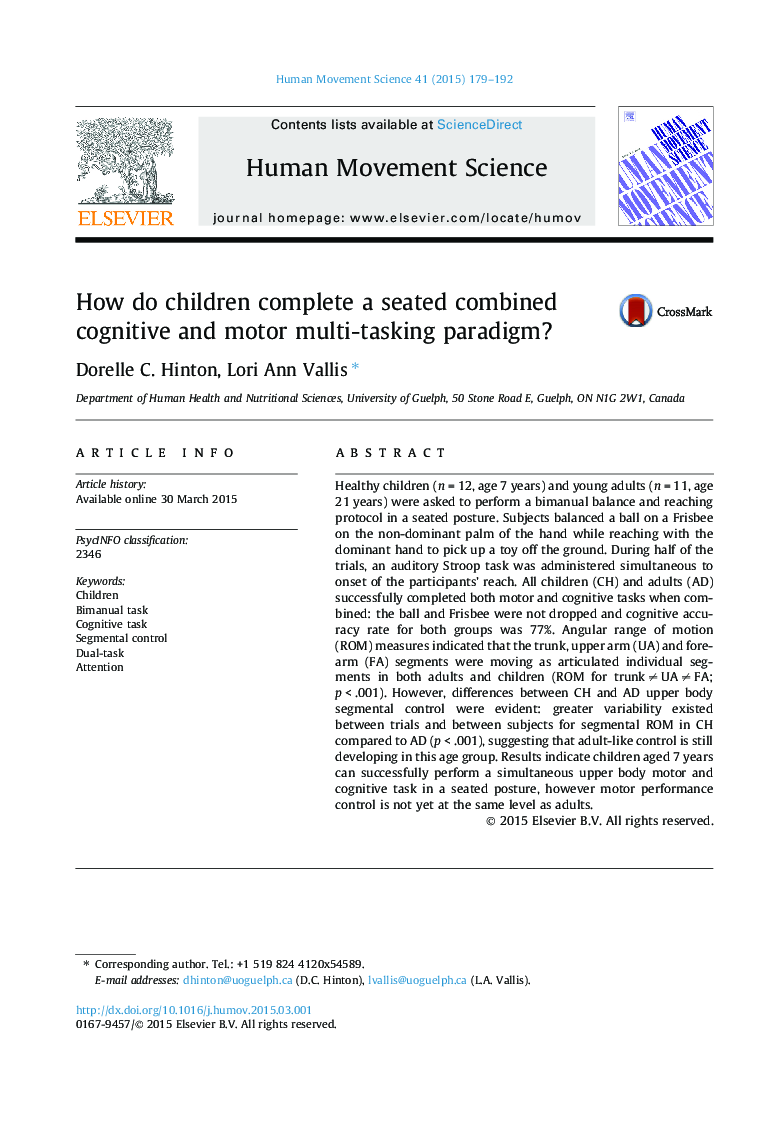| کد مقاله | کد نشریه | سال انتشار | مقاله انگلیسی | نسخه تمام متن |
|---|---|---|---|---|
| 7291976 | 1474224 | 2015 | 14 صفحه PDF | دانلود رایگان |
عنوان انگلیسی مقاله ISI
How do children complete a seated combined cognitive and motor multi-tasking paradigm?
ترجمه فارسی عنوان
چگونه بچه ها یک پارادایم متقابل شناختی و چندگانه موتور را در کنار یکدیگر می گذرانند؟
دانلود مقاله + سفارش ترجمه
دانلود مقاله ISI انگلیسی
رایگان برای ایرانیان
کلمات کلیدی
موضوعات مرتبط
علوم زیستی و بیوفناوری
علم عصب شناسی
علوم اعصاب شناختی
چکیده انگلیسی
Healthy children (n = 12, age 7 years) and young adults (n = 11, age 21 years) were asked to perform a bimanual balance and reaching protocol in a seated posture. Subjects balanced a ball on a Frisbee on the non-dominant palm of the hand while reaching with the dominant hand to pick up a toy off the ground. During half of the trials, an auditory Stroop task was administered simultaneous to onset of the participants' reach. All children (CH) and adults (AD) successfully completed both motor and cognitive tasks when combined: the ball and Frisbee were not dropped and cognitive accuracy rate for both groups was 77%. Angular range of motion (ROM) measures indicated that the trunk, upper arm (UA) and forearm (FA) segments were moving as articulated individual segments in both adults and children (ROM for trunk â  UA â  FA; p < .001). However, differences between CH and AD upper body segmental control were evident: greater variability existed between trials and between subjects for segmental ROM in CH compared to AD (p < .001), suggesting that adult-like control is still developing in this age group. Results indicate children aged 7 years can successfully perform a simultaneous upper body motor and cognitive task in a seated posture, however motor performance control is not yet at the same level as adults.
ناشر
Database: Elsevier - ScienceDirect (ساینس دایرکت)
Journal: Human Movement Science - Volume 41, June 2015, Pages 179-192
Journal: Human Movement Science - Volume 41, June 2015, Pages 179-192
نویسندگان
Dorelle C. Hinton, Lori Ann Vallis,
